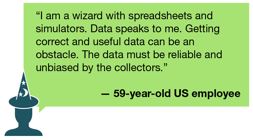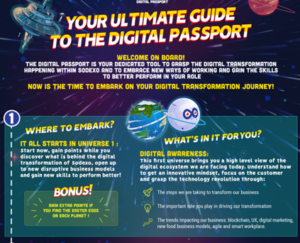It’s Not All Roses (Or Popcorn): Data Literacy Starts With Recognizing Data
 I used to have a microwave with preprogrammed cooking times. The top button was for popcorn. The result: I cooked everything as popcorn. If that machine had been capturing data on my cooking habits, the next version would have been optimized for popping popcorn and nothing more. And anyone looking at the data would have been extremely concerned about my nutrition and health. I’ve just discovered that there has been a lot of “human use analysis” of microwaves. I’m not the only one with particular usage patterns, and it’s not just about microwaves.
I used to have a microwave with preprogrammed cooking times. The top button was for popcorn. The result: I cooked everything as popcorn. If that machine had been capturing data on my cooking habits, the next version would have been optimized for popping popcorn and nothing more. And anyone looking at the data would have been extremely concerned about my nutrition and health. I’ve just discovered that there has been a lot of “human use analysis” of microwaves. I’m not the only one with particular usage patterns, and it’s not just about microwaves.
Fast-forward to the present. I was reminded of my microwave when talking to Belen Moscoso Del Prado, chief digital and innovation officer at Sodexo, at Forrester’s predictions 2020 event in Paris this week. We were talking about the early days of Sodexo’s digital transformation journey and some of the things it discovered when looking at the data its food services sites were collecting. At one site, it saw a spike in the purchase of breakfast sausages. Then suddenly, no one was buying anything else: no croissants, for example, and this was in France. Certainly, a curious insight into the culinary habits of the employees at this site. But was it?
It turns out that their cash registers were like my microwave. The preprogrammed buttons allowed the cashier to push a single button rather than enter a price. The design was intended to capture the item sold and facilitate inventory management. And guess what? Sausage was the button of choice. There was no malice involved; sausages and croissants were the same price, and the cashier merely wanted to move customers along quickly. If the site managers had used this data to determine future food orders, however, customers would soon have found their choices limited to breakfast sausages, with no croissants on the menu. Sacré bleu!
Beyond Sausage: It’s About Data Literacy!
This goes well beyond sausage and croissants; it’s about data literacy. In a recent qualitative survey, we asked Forrester’s ConsumerVoices online panel three questions:
- Do you work with data?
- How comfortable are you working with data?
- What kinds of training would you like to improve your data competencies?


I expected the third question to be the most interesting. However, the answers to the first and second most informed my thinking on data literacy and training needs. Many respondents did not recognize that they work with data, often equating data with numbers or calculations. Others who reported that they did work with data were concerned about its quality as a result of inattention or human error. Even those who were particularly proud of their data prowess worried about the reliability of data collection. They worried about the sausages — and the fact that the cashiers didn’t recognize that they were capturing data that would be used later for decisions affecting the business.
Data Literacy Is The Foundation Of Digital Transformation
 Having learned the lesson early in its digital transformation, Sodexo put a program in place to increase data awareness and improve digital competencies across the organization. The Digital Passport program defines three “universes” that roughly map to Forrester’s data literacy framework and its objectives: increasing awareness of everyone in an organization; improving understanding of how data and digital tools change the way we work and make decisions; and enriching expertise of those who will drive the digital transformation.
Having learned the lesson early in its digital transformation, Sodexo put a program in place to increase data awareness and improve digital competencies across the organization. The Digital Passport program defines three “universes” that roughly map to Forrester’s data literacy framework and its objectives: increasing awareness of everyone in an organization; improving understanding of how data and digital tools change the way we work and make decisions; and enriching expertise of those who will drive the digital transformation.
Sodexo recognized that a successful digital transformation depends on training and empowering its employees to take an active role in the transformation and ensuring that they have the skills they’ll need in the future. Bottom line: Better training leads to greater awareness, higher-quality data, and more accurate analyses. Employees recognize that it’s not just a matter of pushing any button but of capturing the data needed to make better business decisions and drive better business outcomes.
Sodexo has recently been recognized for its digital competitiveness, as well as its ability to use its technology for good. Stay tuned for more details in a Forrester case study.